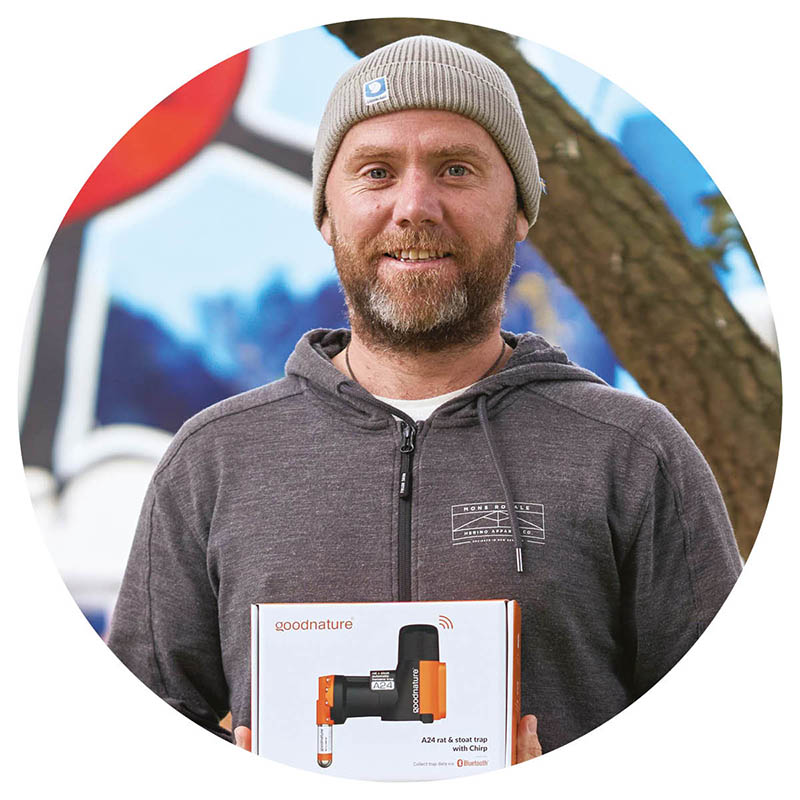You might spot Goodnature’s distinctive orange and black traps when you’re out bushwalking. Able to dispatch up to 24 rodents before being reloaded, these traps are playing a part in bringing back our native birdsong.
Robbie van Dam started thinking about developing the trap when he was working part time in the biodiversity recovery unit at the Department of Conservation and studying at the Wellington Faculty of Architecture and Design Innovation.
“I could see these experts were coming up with great solutions to save specific species but they weren’t scalable. There was innovation but no design thinking,” he says.
So he and his friend, fellow alumnus Craig Bond, decided to use the industrial design skills they learnt at university to do something about it. In 2005, just a year after graduating, they founded Goodnature to research and develop humane traps.
“The biodiversity crisis is something that has to be addressed. Invasive predatory pests are thought to be implicated in 58 percent of all bird, mammal, and reptile extinctions. This was a huge motivation for us developing the first automatic, humane trap—the Goodnature A24,” Robbie says.
After his childhood on a farm near Franz Josef, followed by college in Nelson, Robbie started studying Architecture, before switching to the then newly established Bachelor of Design, majoring in Industrial Design.
“At the time I studied, the Te Aro campus was open 24/7, which created an interesting culture. You would find yourself hanging out ... and learning in between projects. It was a deeply collaborative, multidisciplinary environment.”
Craig and Robbie began a furniture and landscape design business to build up capital so they could afford to develop their traps.
“Every country has a biodiversity issue. And toxicants, the chemicals commonly used to control pests, are controversial in many countries. This is where our humane traps come in,” says Robbie.
The Goodnature A24 trap can also kill multiple times without needing to be reset, making it efficient to use in hard-to-reach areas.
The traps are now used in Australia, the Caribbean, Mauritius, the Pacific Islands, Scandinavia, and the United States, as well as in Aotearoa.
“Eighty percent of our business is international,” says Robbie. “The demand is huge and we’ve been able to meet it largely because we only need to register a product for sale overseas—not a chemical.”
The A24 trap has been on the market for 10 years and Robbie says they’re constantly tweaking it to improve the design and tailor it to kill different species—for example, killing mink but not stoats in Scandinavia.






